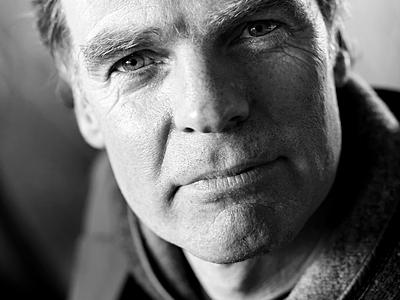Submitted by WA Contents
Tampere Architecture Week 2014 | Winy Maas
United Kingdom Architecture News - Sep 22, 2014 - 09:46 2818 views
24th September, @19:30pm
12-21, Old Customs House, Tampere, Finland
On 24th September, Winy Maas will give a lecture during the "Architecture and Cities in Transition Seminar", as part of the Seventh annual Tampere Architecture Week in Finland. It features internationally well-established designers, Finnish influencers and their views on 2014 theme: SCALES.
To what extent are aesthetics based on the ratios of different scales, such as in colours and measures? Does the scope of the work define its natural scale? Do large projects and valuable buildings deserve more attention than casual and small ones?
Tampere Architecture Week 2014
The seventh annual Tampere Architecture Week fills the city with discussion and knowledge about different phenomena and current projects in the field of architecture and urbanism. This diverse event includes seminars, exhibitions, discussions, walking tours and other architecture related happenings. It offers experiences to anyone interested in architecture, cities and planning. The event has become both locally and nationally significant in its field. It will feature internationally well-established designers, Finnish influencers and their views on current topics.
The Philosophies of Scales
The theme of the 2014 event is scales. In this context “scale” can mean range, relative size and/or spectrum. When thinking of scale, one has to take into account how entities with their diverse scales are perceived and whether the entities can be controlled in complex contemporary processes. To what extent are aesthetics based on the ratios of different scales, such as in colours and measures?
Scale is a tool for a designer to implement a plan into reality. Even a small detail could have a significant role in an architectural entity and the careful implementation of small details is a sign of the skill of the management of scale. Does the scope of the work define its natural scale? Does the management of large entities also require losing some information?
Do large projects and valuable buildings deserve more attention than casual and small ones? Subcultural activities and temporary events can put cities in the limelight and transform them into something more diverse and interesting. How can design and management help to provide a catalyst for new activity? How can an urban structure be enabling?
Three-dimensional planning is static. The significance of the fourth dimension, time, is crucially connected with sustainable development issues such as lifespan, urban rhythms, temporary use and history. What is truly sustainable? Could the historical significance of a building be measured in time?
Architecture and Cities in Transition Seminar
24 September 2014
Confirmed key note speakers:
Winy Maas (MVRDV)
Peter Bishop (Bartlett School of Architecture)
Klaske Havik (TU Delft)
> via MVRDV,tamperearchitecture.com

